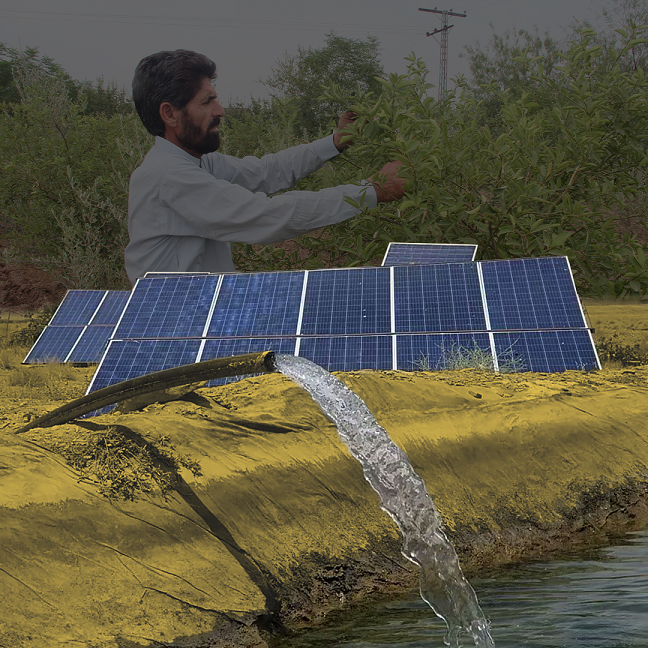Toba Achakzai falls in the revenue limits of district Qilla Abdullah but there are many villages near where apple orchards exist and they are in Chaman district.
Kamaluddin, a resident of Toba Achakzai, owns a 30 acre orchard. He says these areas were deprived of electricity for a long time during the Afghan war. He installed four tube wells when the supply was restored in 1998.
“Four years ago, when we faced simultaneous challenges of intense heat, drought and frequent power outages, we initially converted two of our tube wells to solar power. However, the electricity disruptions that could go on for up to two consecutive days, the orchard garden was not receiving adequate water as the tube wells running on electricity would be non-functional for days. Consequently, I had to shift a third tube well to solar power too and a fourth to a diesel engine.”
Kamaluddin says there are around 3,000 tube wells in Toba Achakzai alone and more than 80pc of apple farmers, including himself, have shifted to solar energy.
“Now I run a diesel engine only on cloudy days or in dire conditions, hence water supply for his orchard is sufficient.”
Orchards abundance in Qilla Abdullah and Chaman
The livelihood of around 50pc of the population of the twin districts located on the Pak-Afghan border, Qilla Abdullah and Chaman, depends on orchards and agriculture.
Chaman has vineyards, pomegranates and fig orchards. Moreover, vegetables are also cultivated there. Apart from apricots, grapes, pomegranates, blackberries and plums, watermelons and melons are widely cultivated in the Qilla Abdullah district.
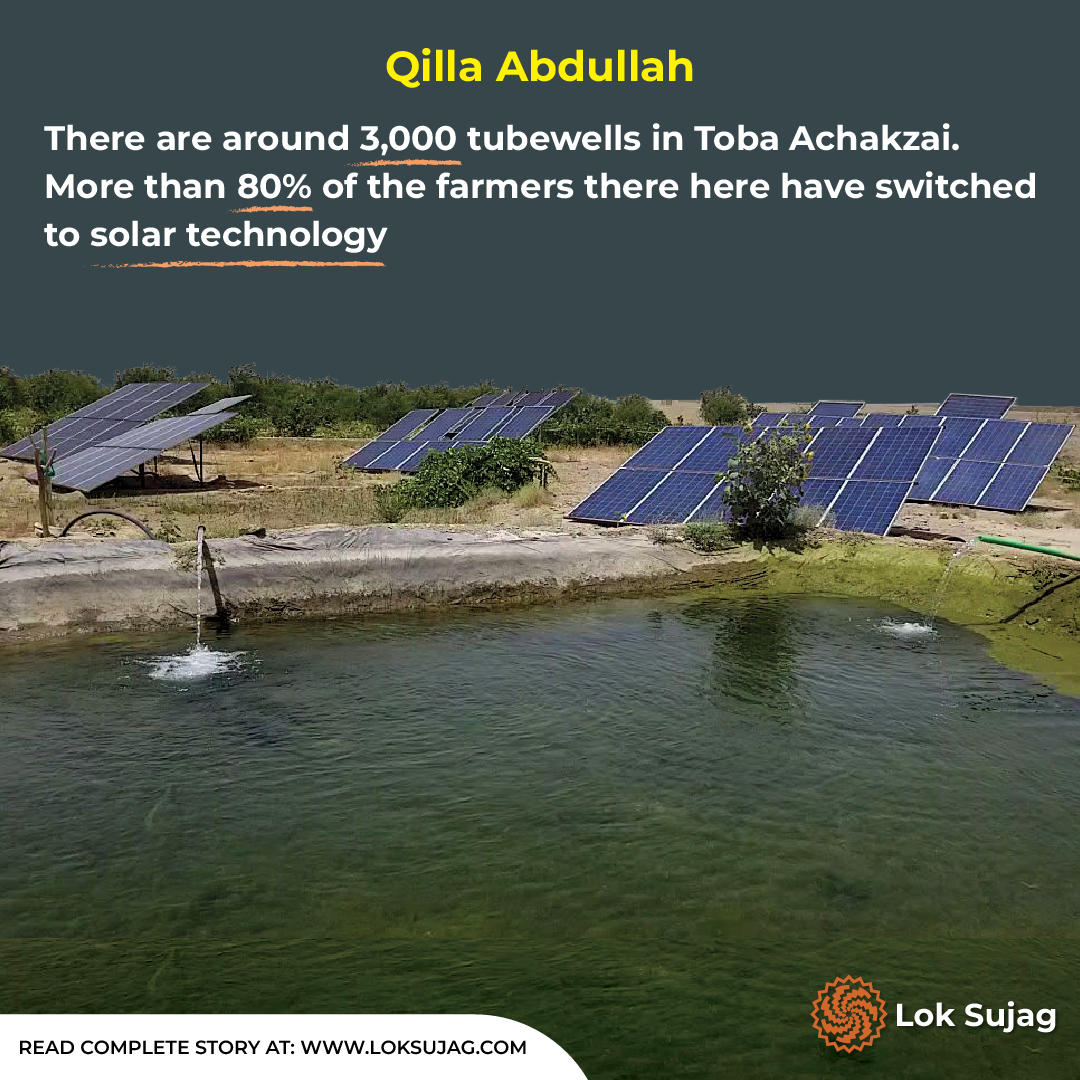
Muhammad Khair lives in Nida Karez in the east of Chaman. He owns a fig and pomegranate orchard. He used to run three tube wells on electricity and one on diesel. According to him, power outages increase in June and July when the orchard needs adequate water.
“Running diesel engines costs me hundreds of thousands. The orchard used to dry up during inadequate water supply. Fed up with this situation, we switched all tube wells to solar energy in the last five years. We got rid of electricity bills. Now I am thinking of growing a vineyard in my orchard,” Khair says
Domestic and commercials consumers shift
Not only farmers but domestic and commercial consumers are also shifting to solar energy due to expensive electricity, over-billing and long outages.
Haji Baraat has been running ‘Tasty Flora’ on Chaman’s Taj Road for the last seven years. He says he spent Rs1.1m on the solar energy system for his two shops and got rid of 16 to 18 hours of daily outages.
“We were exasperated. My monthly bill used to be Rs18,000 to Rs20,000. During loadshedding, I would spend Rs4,000 per day on diesel to run the generator. Shifting to solar dropped the oil cost (night generator) to Rs1,000 per day while the electricity bill was also halved.”
Baraat says that he doesn’t need to pay illegal taxes on electricity bills anymore. He saves Rs100,000 monthly and is planning to install a solar energy system at home.
Dependence on tube wells for irrigation
Syed Ali Achakzai, a resident of Chaman, has an insight into the socioeconomic issues of the region. According to a conservative estimate, he says, there are around 12,000 agricultural and private tube wells in the twin districts.
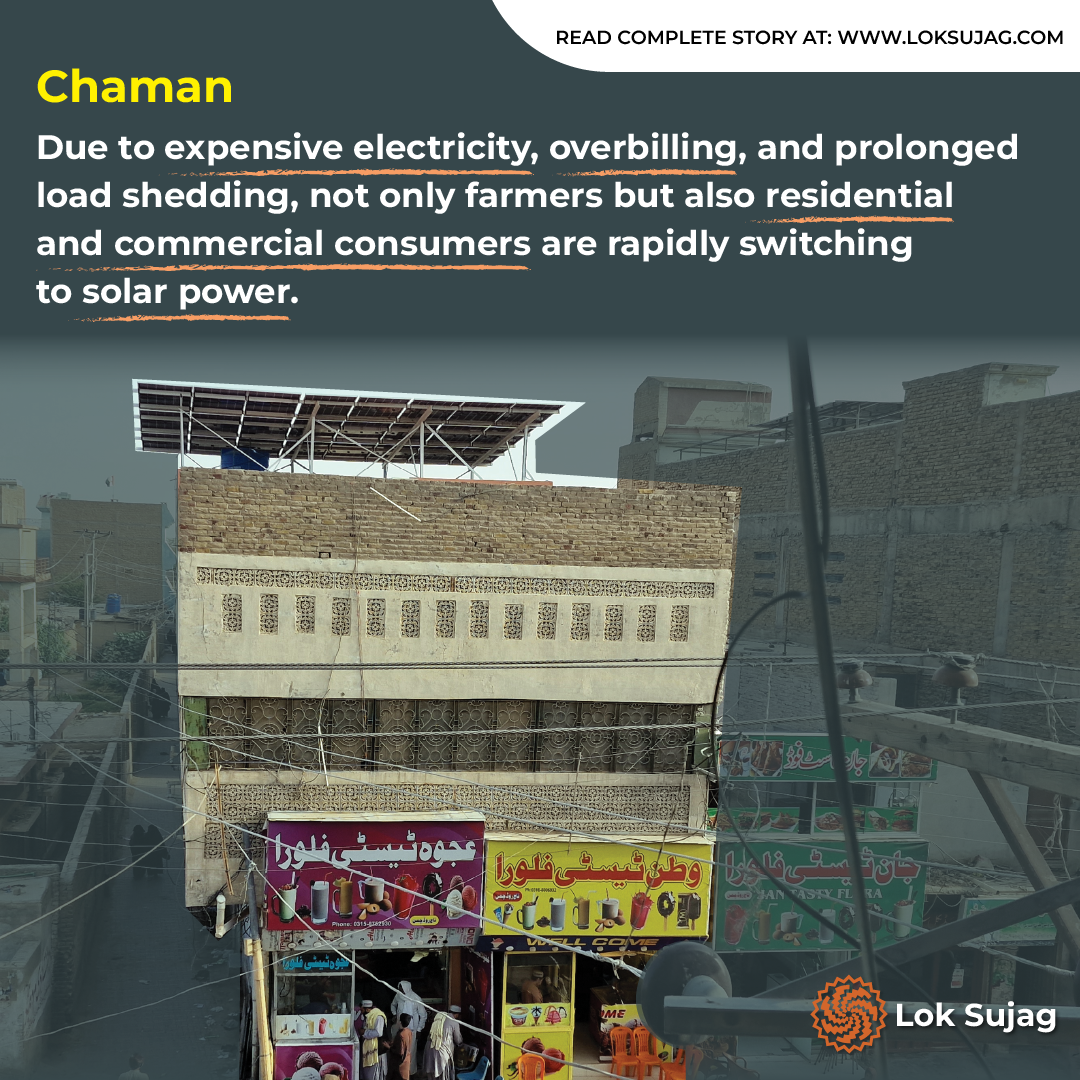
When members of a banned outfit blew up electricity towers seven years ago, there was a power outage here for weeks.
“Orchards began to dry up and the landlords were compelled to run diesel engines, which were very expensive. Consequently, more than 50pc of the orchard owners took loans and installed solar panels. Now the rest of them are also shifting to solar,” says Syed Ali.
Haji Kazim Khan Achakzai is the owner of ‘Qasim Bagh’ spread over 120 acres in Qilla Abdullah’s tehsil Gulistan. He is also a member of the Zamindar Action Committee. He has planted 23 varieties of grapes, four varieties of apples, blackberries and apricots.
According to him, there are 27,437 registered or subsidised agricultural tube wells in Balochistan. The bill for these tube wells was fixed at Rs6,000 per month from 2021 to 2022. But this amount rose to Rs12,000 per month in 2022.
“Out of Rs12,000, provincial and federal governments paid Rs6,500 in the form of subsidy while landlords had six hours of electricity. However, the electricity supply was limited to three hours in September 2023.”
Haji Kazim Achakzai says the farmers protested against the three-hour shortfall in power supply across the province. A protest was also held in front of the Chief Minister’s House from May 2nd to 10th this year. The chief minister promised a six-hour power supply from the federation and recommended solarisation of the registered tube wells.
Govt’s project for all tube wells solarisation
Talking to Lok Sujag, Balochistan government spokesman Shahid Rind says Chief Minister Sarfraz Bugti has resolved the fruit farmers’ concerns. All the registered (27,437) agricultural tube wells of Balochistan will be shifted to solar energy. Moreover, electricity will also be supplied for six hours daily.
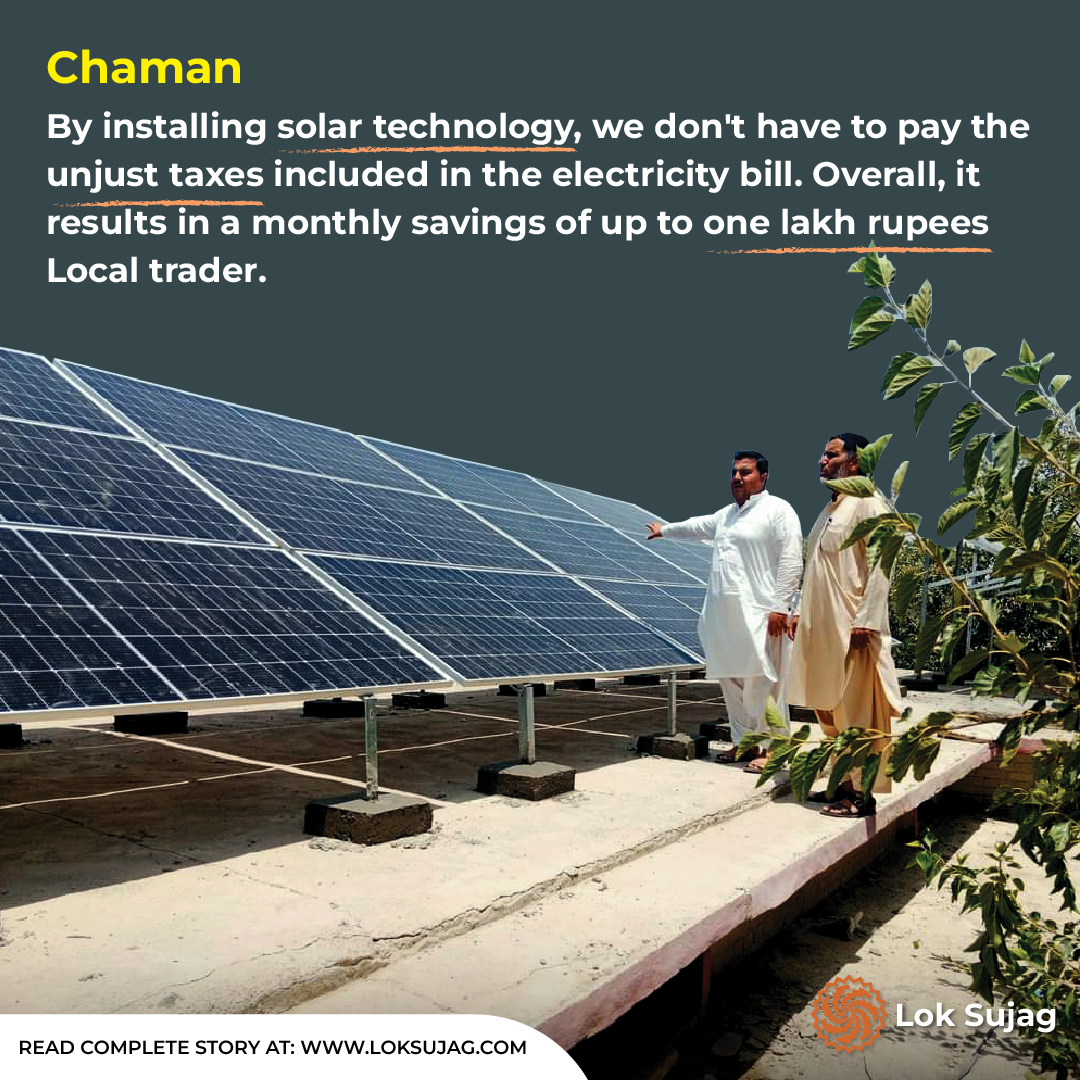
According to him, Prime Minister Shehbaz Sharif has allocated Rs55bn for the solarization of agricultural tube wells in Balochistan. Each landlord will receive a cross-cheque of Rs2m per tube well in the presence of the deputy commissioner concerned, the member of the Zamindar Action Committee and EXEN (executive engineer) Wapda and the process would commence this month.
“The federal government and the provincial government were providing an annual subsidy of Rs24bn on the electricity bill of Balochistan’s agricultural tube wells for three decades. Out of this, the provincial government provided 60pc while the federal government gave 40pc. This subsidy will be abolished after solarisation.”
Muhammad Hashim, a land-holder of Qilla Abdullah’s tehsil Gulistan, is pleased at this government’s decision. He lauds the chief minister for resolving the problem of the farmers by considering it as his own concern. This action will not only prevent loadshedding, overbilling and expensive electricity, but the fruit farmers will thrive and the country’s resources will also be preserved, he hopes.
Solar energy projects beyond fruit orchards
While farmers are excited about solarization, there is also good news for Chaman citizens.
Chaman’s new District Headquarters (DHQ) Hospital became active in 2019 where around 150 patients visit the OPD every day. Due to power outages, the patients are facing hardships in the hospital’s dialysis unit, X-ray tests, operating theatre, obstetrics and gynaecology and other departments.
Also Read
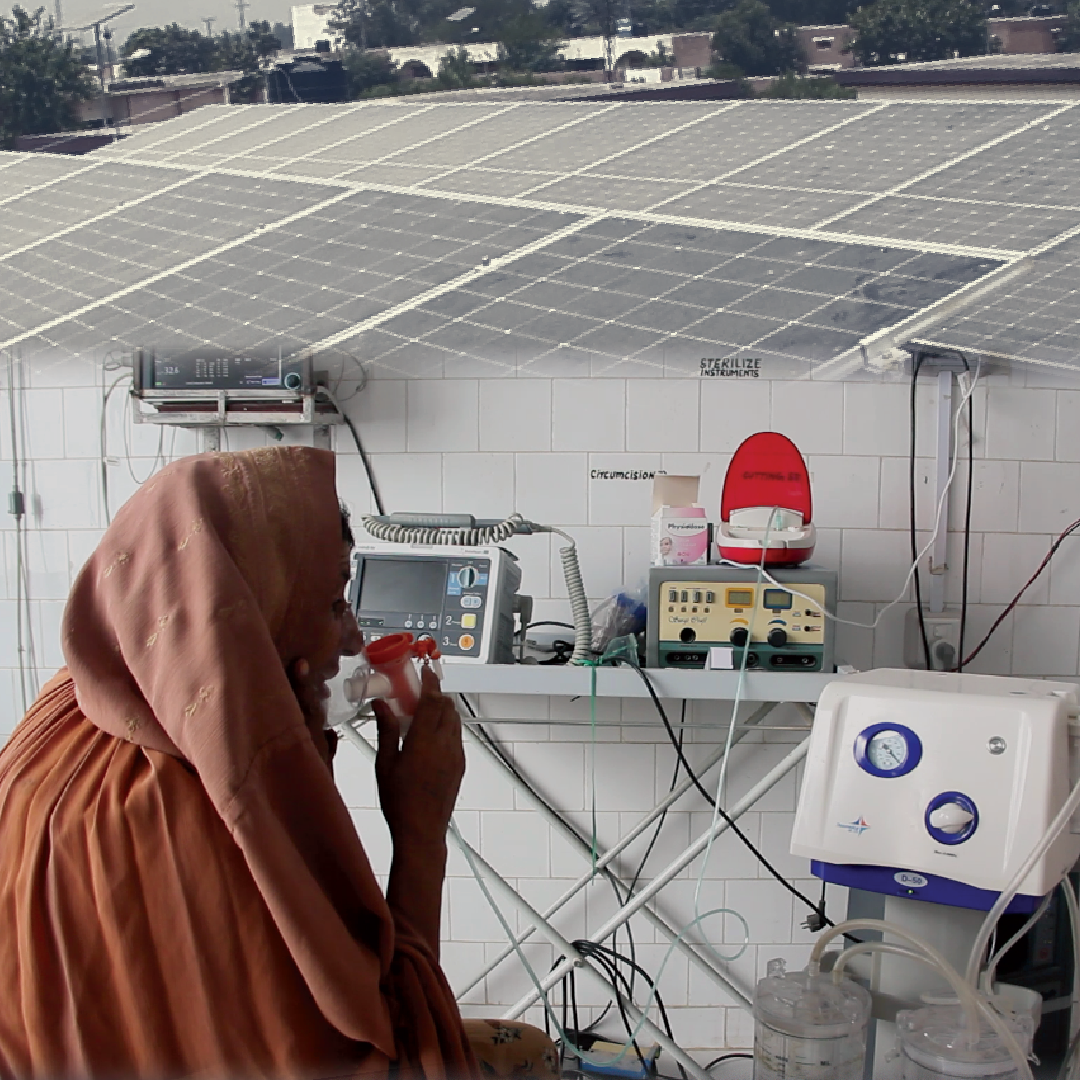
How is solar energy easing troubles of tribal district Khyber?
According to the hospital administration, the dialysis unit was shut down in August 2022 due to a shortage of funds. However, Lok Sujag’s report shows that the Chamber of Commerce and Industry took responsibility for one year’s cost of operating the dialysis unit generator. Since 2023, a businessman, Haji Nazar Jan has been bearing these expenses.
Currently, DHQ Hospital’s MS Dr Abdul Rashid Nasir has announced the installation of solar panels in the hospital within 15 days. This project would keep the hospital departments functional for 24 hours and the patients will also have some convenience.
UNHCR District Officer Sultan Rudi says that a solar energy system is being installed at the DHQ hospital with their organisation’s aid. This installation is essential as the hospital provides medical care to both the local community as well as the registered Afghan refugees.
“In 15 days, two educational institutions of the city, Government Boys Higher Secondary School and Girls High School will also be shifted to solar energy. Thousands of local children as well as with Afghani children are studying in these schools,” says Rudi.
Published on 24 Jul 2024
